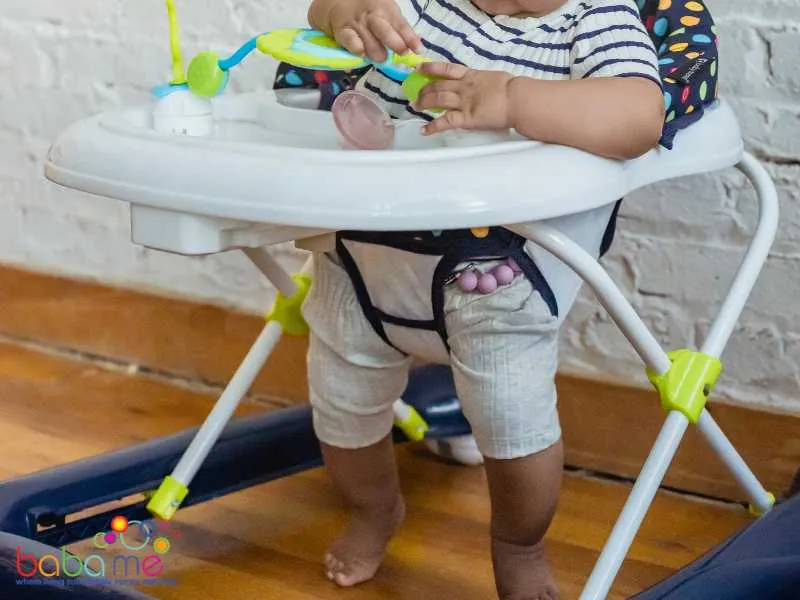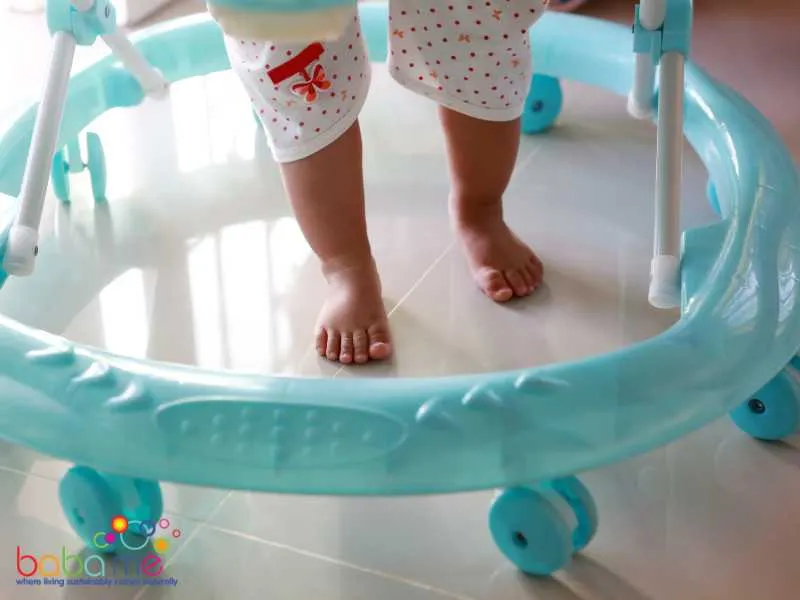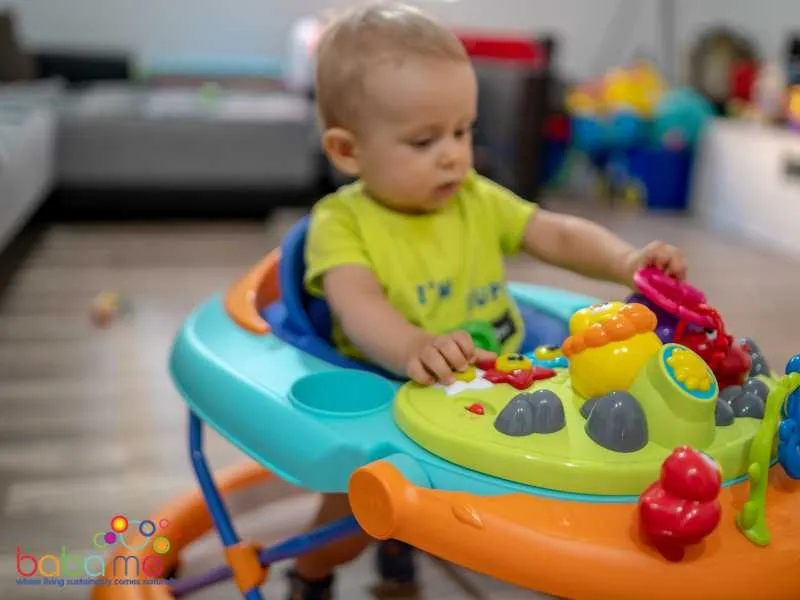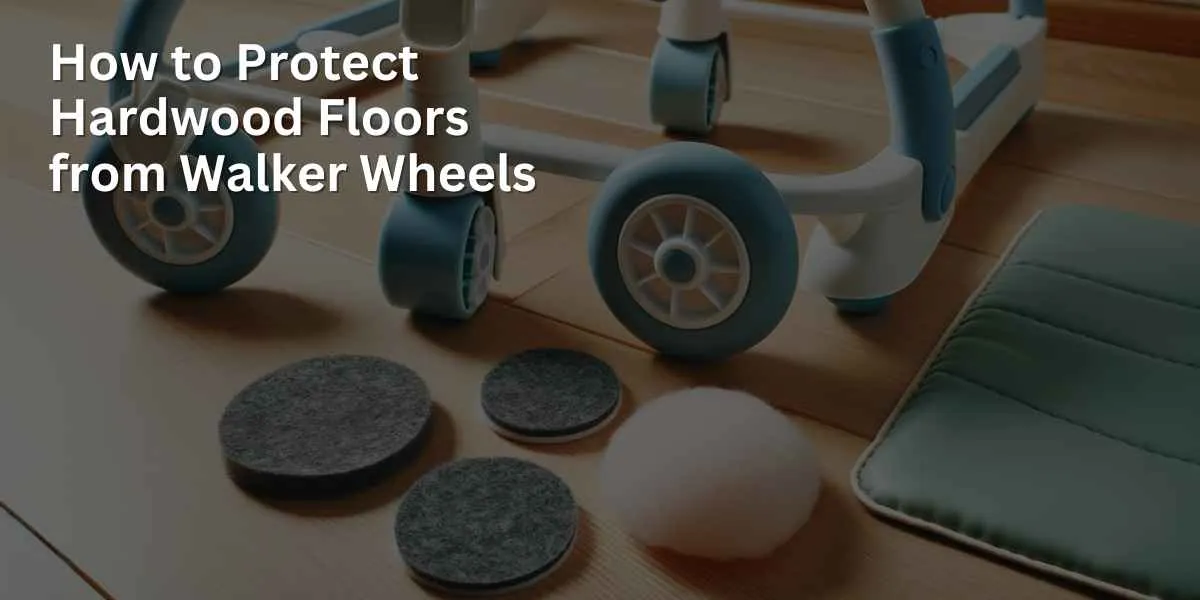Protecting Hardwood Floors from Baby Walker Wheels is a crucial task for parents who cherish their polished floors as much as their little ones’ mobility milestones.
Hardwood floors are a beautiful addition to any home, but they can be easily damaged by the wheels of walkers. Over time, the constant use of walkers can leave unsightly scratches and marks on the floors, which can be costly and time-consuming to repair.
Fortunately, there are several ways to protect hardwood floors from walker wheels.
One of the easiest and most effective ways to protect hardwood floors from baby walker wheels is to use walker socks. These are small pieces of fabric that can be placed over the existing wheels of the walker, preventing them from coming into direct contact with the floor. Not only do walker socks protect the floors, but they also provide a smoother and quieter ride for the user.
Key Takeaways on Protect Hardwood Floors from Baby Walker Wheels
- Choose the Right Walker: Look for a baby walker with wheels designed for use on hardwood floors. Some walkers come with silicone or rubber wheels that are less likely to scratch or mark the floor.
- Wheel Covers: Consider purchasing or making soft covers for the walker’s wheels. These can be slipped over the wheels to provide a soft barrier between the hard plastic and the wood.
- Use a Play Mat: Lay down a large play mat or area rug for your baby to use the walker on. This not only protects the floors but also provides some cushioning for your baby.
- Floor Finish: Ensure that your hardwood floors are well-finished with a high-quality sealant. This creates a protective layer that can help prevent scratches and dents.
- Regular Maintenance: Keep the wheels clean from dirt and debris, which can be abrasive and scratch the floor. Also, check the wheels regularly for any rough edges or damage that might cause scratches.
- Walker Alternatives: Consider using stationary activity centers that do not have wheels and therefore do not pose a risk to your floors.
- Temporary Floor Covering: Use temporary adhesive floor tiles that can be placed down when the walker is in use and picked up afterward. These are often used in trade shows and can be an effective temporary solution.
- Felt Pads: Stick felt pads onto the bottom of the walker’s wheels. This method requires the pads to be replaced often as they can wear down quickly or come off during movement.
- Avoid Hard Wheels: Avoid walkers with hard plastic or wooden wheels, as they are more likely to cause scratches and damage to hardwood floors.
- Controlled Use: Limit the use of the walker to areas with rugs or on less delicate flooring to minimize the risk of damage to your hardwood floors.
Why Protect Hardwood Floors from Walker Wheels?
A wood floor is avaluable assets that add beauty and elegance to a home. But, they are susceptible to scratches, dents, and damage from various sources, including baby walker wheels.
Baby walkers, particularly those with hard plastic wheels, can cause significant damage to hardwood floors over time as they are moved and dragged and scratch wood floors.
This damage can detract from the appearance of your floors and could require costly repairs or refinishing to restore. Scratches can harbor dust and allergens, potentially compromising the cleanliness of your home.
Hence, it’s crucial to protect hardwood floors from walker wheels to maintain their aesthetic appeal, longevity, and the overall investment in your property.

Types of Walker Wheels That Can Damage Hardwood Floors
When it comes to protecting hardwood floors from walker wheels, it is important to understand the types of wheels that can cause damage. Here are some types of walker wheels that can damage hardwood floors:
Hard Plastic Wheels: Hard plastic wheels are the most common type of walker wheels that can cause damage to hardwood floors. They can scratch and scuff the floor, leaving unsightly marks.
Metal Wheels: Metal wheels are another type of walker wheels that can cause damage to hardwood floors. They can leave deep scratches and dents on the floor.
Small Wheels: Walkers with small wheels can also cause damage to hardwood floors. The small wheels can dig into the floor and cause scratches and scuffs.
Worn Wheels: Walkers with worn wheels can also cause damage to hardwood floors. The worn wheels can leave black marks and scuffs on the floor.
It is important to note that not all walker wheels can cause damage to hardwood floors. Some types of walker wheels are designed specifically for use on hardwood floors and are less likely to cause damage. These include:
Rubber Wheels: Rubber wheels are a great option for protecting hardwood floors. They are soft and flexible, which means they are less likely to cause scratches and scuffs.
Soft Plastic Wheels: Soft plastic wheels are another good option for protecting hardwood floors. They are softer than hard plastic wheels, which means they are less likely to cause damage.
Large Wheels: Walkers with large wheels are less likely to cause damage to hardwood floors. The larger wheels distribute weight more evenly, which means they are less likely to dig into the floor and cause scratches and scuffs.

How to Protect Hardwood Floors from Walker Wheels
Protecting Hardwood Floors from Walker Wheels involves the use of floor-friendly materials such as felt pads or silicone caps that can be attached to the wheels. Regular maintenance of both the walker and the floors ensures minimal damage. Area rugs and playmats offer additional protection and reduce wear on high-traffic areas.
Parents and caregivers can select walkers with wheels designed for hardwood surfaces, which help in preserving the floor’s finish. Cleaning the wheels regularly to remove debris that can scratch or mark the flooring is also essential. Soft wheel materials like rubber are less harsh on hardwood compared to hard plastic.
The choice of a suitable walker and preventive measures not only protects the floor but also provides peace of mind for families, allowing children to explore their surroundings safely. This approach to floor care during a child’s early walking stages represents an investment in maintaining the home’s aesthetic and functional integrity.
Using Protective Pads
One of the easiest and most effective ways to protect hardwood floors from walker wheels is to use protective pads. These pads are designed to be placed under the walker legs and will help to prevent scratches and scuffs on the floor.
There are many different types of protective pads available, including felt, rubber, and plastic.
Felt pads are a good choice for hardwood floors, as they are soft and won’t scratch the surface. Rubber pads are also a good option, as they are durable and provide good traction and won’t hinder your baby learning to walk.
Plastic pads are less common, but they can be a good choice if you need something that is waterproof and easy to clean. These are much safer than using a tennis ball!
Furniture Pads for Hardwood Floors
These practical, efficient, straightforward-to-apply, pad protector for baby walkers proves to be an essential asset for parents concerned about their wooden floors.
- Effortless to fit on most baby walker wheels
- Remarkably lightweight, adding no extra burden to your baby’s walker
- Able to protect against a variety of damages, from scratches to deeper scuffs
- Effectively maintains the aesthetic appeal of your wooden floors
Replacing Walker Wheels
If your walker wheels are causing damage to your hardwood floors, it may be time to replace them. Look for wheels that are made specifically for hardwood floors, as these will be designed to be gentle on the surface.
Some types of wheels that are good for hardwood floors include rubber, polyurethane, and non-marking wheels. When replacing your walker wheels, be sure to follow the manufacturer’s instructions carefully to ensure that the new wheels are installed properly.
Using Rugs or Carpets
Another way to protect hardwood floors from walker wheels is to use rugs or carpets. These can be placed in high-traffic areas or under the walker itself to help absorb shock and prevent scratches.
Look for rugs or carpets that have a non-slip backing, as this will help to keep them in place. You can also choose rugs or carpets that match your decor to add a stylish touch to your home.
Regular Cleaning and Maintenance
To keep your hardwood floors looking their best, it’s important to clean and maintain them regularly. Use a soft-bristled broom or a vacuum with a hardwood floor attachment to remove dirt and debris from the surface.
Avoid using harsh chemicals or abrasive cleaners, as these can damage the finish. Instead, use a cleaner that is specifically designed for hardwood floors. You should also consider applying a protective coating to your floors to help prevent scratches and scuffs.

FAQs on How to Protect Hardwood Floors from Walkers
What can you put on the bottom of a walker to protect floors?
To protect hardwood floors from scratch marks, you can use walker glide attachments or walker tennis balls. These items are specifically designed to minimize friction between the walker and the floor, reducing the risk of scratches and scuff marks. Rubber tips or soft silicone caps are also available for walker legs to provide additional protection from walker users.
Do walker skis scratch flooring?
Walker skis, when used properly, should not scratch hardwood floors. It’s essential to keep the ski glides clean and free from debris to avoid any potential damage. Regularly inspect the ski glides for wear and tear, and replace them when necessary to maintain their effectiveness in protecting your floors.
How do I keep my chair legs from scratching my hardwood floors?
To prevent chair legs from scratching your hardwood floors, consider using felt pads, rubber leg caps, or silicone floor protectors. These protective items can be easily attached to the bottom of chair legs, providing a barrier between the furniture and the floor to avoid scratches and scuff marks. Make sure to clean the floor protectors regularly and replace them when they become worn out.
What can I put on my hardwood floors to protect them?
There are several ways to protect hardwood floors, including using area rugs in high traffic areas and under heavy furniture, placing floor protectors under chair legs, and using appropriate attachments like walker glides or tennis balls for walkers. Maintaining a clean floor by sweeping or vacuuming regularly can help prevent dirt, debris, and dust from causing scratches.






